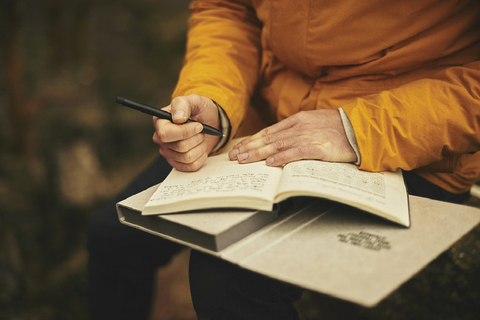The Top Five Mistakes You Wish You Could Erase
THE TOP FIVE MISTAKES YOU WISH YOU COULD ERASE.
We’ve all bin there,
We’ve all been there. You make your way through life hoping for the best, but sadly, sometimes you get it wrong. This could be a small wrong, like forgetting someone’s name at a party; or a big wrong like your entire summer wardrobe when you were 15. (Like, seriously, what was that?) Most of the time when we make a mistake we are left filled with regret, wishing there was a real life CTR+Z to take things back. But no matter how many times you delete those pictures on Facebook they still exist. And they exist somewhere out there, not just in your nightmares.
One glorious exception is with pencils and erasers. Do you remember being a tiny human in school, holding an over-large pencil in your hand, bravely tackling the daunting mountains of ‘What I did on my holidays’? Knowing that if you got something wrong you could erase it and start again? (Some people wonder why childhood is a glorious, carefree time. I don’t wonder, I know why.)
If only life was like stationery and our mistakes could be erased. Well, this very neatly segues us into the corporate goal of this article, which is to highlight our erasers. Based on some rigorous research and questioning of The Journal Shop customers which definitely happened, here are the Top Five Mistakes they wish they could erase:
1. THE HAIRCUT

You know it was a bad haircut when it starts with a definite article. It’s difficult to know what the hairdresser was going for. Maybe they were angry with you. Maybe it was their first day. Was it a cry for help? If so, the series of hats, scarves and head coverings that you wore religiously till it grew out, meant no one ever heard it.
If only you could have tidied up the haircut with the Metaphys Viss eraser:

2. THE TATTOO

In school, they told you not to get one. At work, people told you that you would regret it. Online, the pictures of terrible tattoos tried to tell you. But it was your body and you could do whatever wanted to it, damn it! Well now you share your body with a dying chicken. So, maybe they knew something you didn’t.
If only tattoos could come off as easily as pencil does when you use the Seed Super Gold eraser:

3. THE CREDIT CARD

I’m not so sure this one is actually your fault. I mean, you’re only human. How can you be expected to not spend free money? I mean, it’s money. That you can use to buy stuff. For free. OK, it ruined your credit and now you need a responsible adult to co-sign when you try to order a McDonald’s delivery. But still. Free money.
If only you could clean up your credit score as easily as the Faber Castell 2001 GRIP eraser cleans up mistakes:

4. THE EX

This one speaks for itself. Nothing more to say.
Only, if there is someone out there for everyone, some special soul that is the missing piece to your jigsaw, the peanut butter to your jam, the moon to your stars, then in our binary world it follows that there is someone out there who is the opposite.
The jagged edge that crushes your jigsaw piece, the anaphylactic shock to your system, the black hole that traps your stars and crushes them into an empty frozen void. And you might meet them in an ‘All Bar One’ in Clapham. Just saying.
Sadly, the excellent film ‘Eternal Sunshine of the Spotless Mind’ is not a documentary, and you cannot remove the memory of your ex as easily as the Milan 'Gigante' 403 eraser does its job:

5. THE ONE THAT GOT AWAY

No, not an awful episode of ‘Friends’. (You know, like all of them. #Friendsburn) We all have someone that we met and had an instant connection with. A person that for some reason just seemed special, like they knew something about life that made them glow from the inside. And… they seemed to like us! Now all we had to do was say something, do something, make some small sign to let them know that we felt the same way. And then maybe something could happen.
But instead we said nothing, did nothing and gave no sign that we felt that way. Why? Lots of reasons, some good, some bad. The point is, we let the chance slip away. Now we compare each new person we meet with the memory of what could have been. It’s not so bad really. I mean, it’s probably better this way. Probably.
If only you could get rid of regret as simply as the Metaphys Gum eraser magics away errors:

Shakespeare, Bob Dylan, J.K. Rowling, Someone once said we learn more from our mistakes than our successes. Rather than feeling remorse about them, we should see mistakes as opportunities to learn, grow and become better and wiser people. Which feels right, and is worth reflecting on.
The same oracle probably also said that it’s best to correct stationery mistakes with the finest erasers available online. And who are we to argue with that?
Header Credit









































































